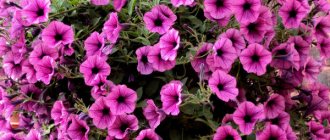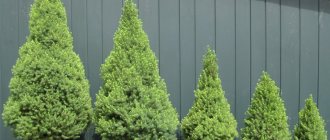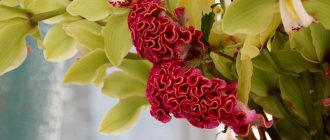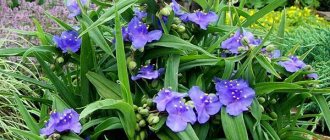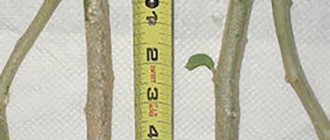Now there are more and more people who want to have the Canadian spruce Glauka Konika on their property, closer to home. Including many people who want to save the small spruce they were given in a pot for New Year.
However, in order for the plant to initially have everything it needs for proper growth and development, it is assumed that a number of features must be observed in planting and caring for Konica in open ground.
Note! If you purchased Konica in a pot in November-December or it was given to you for the New Year , then you will most likely find this material about caring for a spruce at home .
Description of the Canadian Konika spruce
The decorative value of dwarf spruce is due to its natural properties:
- evergreen dense needles of a characteristic bluish-green color with soft needles up to 1 cm long;
- the lush crown has the shape of a regular cone and is formed naturally;
- cones are oblong, up to 6 cm long, appear rarely;
- Canadian spruce Konica is small in size: average height is 2 m, crown diameter of an adult tree is about 2 m;
- annual growth during the first ten years of life is 6–10 cm, then about 3 cm;
- life expectancy – 300–500 years.
Canadian spruce-conica
Variety varieties
The biological feature of the low-growing Canadian spruce Konica, which contributes to the natural degeneration of the variety, served as the basis for the creation of new dwarf hybrids. How this happens remains a mystery.
Varieties derived from natural mutation:
- Picea glauca conica Alberta Globe. The Alberta Globe variety has been cultivated since 1967. A dwarf variety with a spherical crown. At 10 years of age, the crown diameter is about 30 cm. The maximum height of an adult plant is 90 cm with a crown width of 120 cm. Frost-resistant. Awarded a gold medal in 1968.
- Picea glauca conica Blue Wonder. It has become known since 1984. It is characterized by rapid growth: at the age of 5, growth increases to 20 cm; by the age of 20 it reaches 2 meters in height and 80 cm in volume; The color of the needles is blue-green. The parameters depend on the habitat and growing conditions.
- Picea glauca conica Gnom. A low-growing form with gray-green needles and a narrow pyramidal crown, it grows just over a meter.
- Picea glauca conica Daisy`s White. Slow growing variety. It is distinguished by the variability of its needles from yellow to white; after six months the needles turn green.
The popularity of conifers in the landscape, frost resistance and ease of care encourage breeders to create hybrid forms. Every year, the assortment of nurseries is replenished with both mutant varieties and selection products.
The Maigold variety (Picea glauca conica Maigold) has become widespread in Russia. Opened in 1979 in Belgium. Characteristics and appearance are similar to Daisy White. In our climate, a 10-year-old tree reaches only 80 cm. With the same data, a new variety of selection, Sun on the Sky (Picea glauca Sun on the Sky).
Very popular bluish coniferous varieties: Sanders Blue (Picea glauca Sander`s Blue), Alberta Blue (Alberta Blue) and various hybrids.
Planting Picea glauca Conica
In order for the spruce to take root well and fully develop, it is necessary to choose the right seedlings, planting site, and prepare the soil. It is equally important when planting to adhere to the optimal timing and follow the recommended procedure.
Selection of seedlings
When purchasing Canadian spruce, pay attention to the following points:
- Planting material is purchased from nurseries that guarantee the quality of their products.
- The crown of the Christmas trees should be thick, evenly developed, fresh, without dry, damaged or diseased branches.
- Plants with a closed root system retain moisture better and take root faster.
- Saplings with an open root system should not have dry, damaged roots. After purchasing, the roots must be wrapped in a damp cloth or film and planted as soon as possible.
Spruce seedlings
Choosing a landing site
Glauca Conica does not tolerate polluted city air well; it is not planted near highways. The plant loves well-lit places, protected from the wind. The soil at the planting site should be moderately acidic (pH 6-6.5), fertile, well permeable to water and air. Infertile soil is enriched - 100 g of superphosphate and potassium salt are added per 1 square meter of area.
Preparing soil mixture and planting
Konica is planted throughout the year, except for the winter season. For seedlings with open roots, it is better to choose spring or autumn; plants with a closed root system are placed on the site in the summer.
In order for the Canadian Christmas tree to take root better, immediately after planting it is shaded from direct sunlight. Between dwarf varieties it is necessary to maintain a distance of 1 m, between tall varieties - up to 3 m.
Planting spruce in the ground
Planting stages:
- The planting pit is prepared based on the size of the roots, on average 50x50x50 cm.
- Drainage (expanded clay, coarse sand, broken brick) about 10 cm thick is laid at the bottom.
- Prepare a soil mixture of compost (humus), turf soil, peat, sand (2:2:1:1).
- The hole is partially filled with prepared soil and a seedling is installed. The roots are distributed evenly on all sides. The root collar is placed level or slightly above the surface of the earth.
- The root system is sprinkled with the remaining part of the soil, slightly compacted, and a tree trunk circle is formed.
- 10-12 liters of warm, settled water are poured under the plant.
- The tree trunk circle is sprinkled with mulch (peat, wood chips or wood bark of medium fractions).
Requirements for planting material
When buying a Christmas tree, pay attention to the color of the needles , which should be intense. If you buy a seedling from a nursery that has grown in a container, then turn the container over: if the soil does not spill out of it, then the planting material is good. The roots of the purchased seedling must be wrapped in damp cloth or mesh.
Sometimes a coniferous plant looks healthy, but in fact it has not been viable for a long time. Check the spruce needles. Dead needles begin to turn yellow at the edges, and when pressed, they bend to the side. Living needles are elastic and bend when pressed. And remember: the younger the seedling, the easier it will be for it to take root in the new soil.
Caring for Konika spruce
The growth and full development of the tree is achieved through regular watering, loosening, and timely feeding. The plant does not tolerate hot and frosty weather well and requires seasonal shelter. It is useful to periodically inspect the crown and do pruning.
Watering
Canadian spruce needs moderate watering; it does not tolerate drought and waterlogging. Young or recently planted trees especially require timely irrigation. Mature street spruce trees are watered infrequently, but abundantly.
The need for watering is determined as the soil dries. The average water consumption rate is about a bucket per plant. Its temperature should be 18-25ºС, since cold water makes trees sick and may die. In summer, the crown is additionally irrigated, moisturizing and removing dust.
Caring for Canadian spruce
Loosening and mulching the decorative Christmas tree
To maintain optimal moisture, the soil around the plant after watering is loosened and mulched - sprinkled with peat or crushed bark, wood chips. Loosening is carried out when the soil around the tree trunk dries out. This is done carefully, since the main part of the Konica root system is located near the surface.
Top dressing
Canadian spruce does not require mandatory feeding, but the following fertilizers can be used to strengthen it:
- "Plantafol". The timing of feeding is spring and early summer to increase resistance to diseases. Dosage – 25 g per bucket of water, fertilize once every ten days.
- "Novofert" for coniferous species. Fertilizing is done in early spring to improve the adaptation of spruce trees. Dosage – 20 g of the drug per 10 liters of water (per 5 sq. m of area).
- "Agrecol" for conifers. Strengthen the root system at the end of September - October. Dosage – 1 measuring spoon of the drug per 1 m of plant height.
Growth stimulants “Epin”, “Zircon”, complex fertilizer NV-101, mineral fertilizer “Kemira”, and rotted manure have a good effect on the development of spruce. Granular preparations are scattered over the area of the trunk circle, then watered.
Pruning Konica
Pruning Canadian spruce
Dwarf Canadian spruce does not require decorative pruning. The crown is examined in spring and autumn; damaged, dry, disease- or insect-infested branches should be cut off. For pruning, a well-sharpened pruner is used, and the removed branches are burned.
Preparing dwarf spruce for winter
When preparing the spruce for wintering, in the second half of October, pre-winter watering is carried out (30-40 liters per tree), combining it with the application of complex fertilizing. In winter, snow is poured under the trunk, the crown is protected from severe frosts and sunburn with spunbond.
Destiny is a turkey.
I'll start with a little background. A long time ago, when I was finishing school, there was a boy in our class named Sergei. He studied well, he had many friends, loving parents. One problem, from the eighth grade he suddenly stopped growing. Before this, he was a boy like a boy, no less or more than others, but now he was cut off. And since then, in physical education, he always stood last, sadly completing the roll call: “The calculation is finished!”
Man is a herd creature, with clear concepts of the norm. Anything unconventional often causes ridicule and aggression. Girls don't look at them like that, boys refuse to be friends with them. And Seryogin’s 150cm height did not fit into the norm. Seryoga's self-esteem stubbornly went down. He still studied well, but after finishing school with dignity, he did not go to college, like other classmates, but to an ordinary technical school. Perhaps he simply did not want to meet his former friends there.
About 10 years passed. One day I was walking along the corridor of some institution, and the young, respectable man walking ahead somehow reminded me of Seryoga. At least the voice was definitely his. And his companion addressed him respectfully, Sergei Petrovich. Suddenly he looked back and I was stunned. Yes, it was our Seryoga, but different. This one was confident in himself, did not hide his eyes, but looked at his interlocutor with a kind, welcoming smile. And most importantly, he was head and shoulders above that school Seryoga. It was felt that he was respected and loved. We got to talking, and I found out that after school he barely grew for another year or two, and then somehow immediately grew to 178 cm, which at that time was much higher than average height.
Reproduction of Conica spruce
There are two main ways to propagate dwarf spruce - by seeds and cuttings. When propagated by seeds, the seedling may not inherit varietal qualities. From cuttings, a meter tall spruce can be grown in 5 years.
Procedure for growing from seeds:
- In late autumn, full-ripe seeds are selected from the cones.
- They are soaked for 2-3 hours in a solution of potassium permanganate (1%), dried, placed in a container with sand to a depth of 1-1.5 cm. Stored at a temperature not exceeding 5ºC in a dark, dry place.
- At the end of February, the prepared seeds are sown in container cells with a soil mixture (peat, sand) and watered.
- The crops are placed in a bright, warm (18-20ºC) place, covered with film or glass. The soil is periodically watered, avoiding waterlogging.
- Sprouts appear two to three weeks later. Grown trees can be planted on the site in late May - June.
Canadian spruce cuttings
Growing blue spruce from cuttings:
- Late April - early May: shoots of four-year growth (12-15 cm long) with a “heel” - part of the trunk bark - are harvested - this improves survival rate. Then the lower tips are placed in a solution of a growth stimulator (Kornevin) for a day.
- Planting containers are filled with soil mixture (peat, compost, sand) and moistened.
- The cuttings are buried 4-5 cm into the substrate at an angle of 30º, sprayed with a spray bottle, and covered with film.
- Every two to three weeks, watering and fertilizing are carried out, and drying cuttings are removed. Two to three years later, you can transplant the Christmas trees into open ground.
Features of the variety
Scientists have bred many types of miniature spruce trees, but there are specimens formed by nature itself. Glauca conica is a natural hybrid due to mutation of the gray spruce. The place of cultivation is Denmark, Poland and the Netherlands, where the cultivation of Picea glauca conica spruce has reached an industrial scale.
It grows little by little and over the first ten years it adds about 3-4 cm in height, after which the process becomes slower. By the age of 60, the tree grows up to 4 m and has a diameter of 2 m. This happens if it is planted in open ground. The average age of spruce glauca conica reaches 300-500 years, which is why it is called the longest-liver of the planet.
The tree attracts attention thanks to its regular cone-shaped shape. The needles are thick and fluffy, which adds to its attractiveness. It attracts gardeners because there is no need to shape the crown by pruning. At the beginning, the branches are not so dense, as the strength goes into growth. Then the needles become thicker and a green cone is formed. Spruce needles do not prick, and the color becomes dull with age. The tree's cones reach a length of 6 cm, but practically do not appear on decorative specimens.
Growing in a pot
Low-growing Glauca Conica is also cultivated at home, following simple rules:
- The plant is placed in a well-lit place, but protected from prolonged exposure to direct sunlight.
- In summer, the tree can be taken out into the open air (balcony, terrace) or the room can be ventilated regularly.
- For the winter, it is advisable to place the container with spruce in a cool (5-10ºC) bright room with access to fresh air. If you insulate the soil and roots, the plant can tolerate sub-zero temperatures.
- In summer, water as the soil dries out. In dry air, the crown is sprayed 5-6 times a day. In winter, the plant is watered 1-2 times a week, at zero temperatures - no more than once a month.
- Dwarf spruce is fed with the same preparations as garden spruce.
- Replanting is done in the spring, every two to three years, using a container one size larger than the previous one. When replanting, it is advisable to partially or completely update the soil mixture.
Canadian spruce cuttings in a pot
How to transplant to another place
A purchased seedling or one grown at home is allowed to be moved outside. The ideal period for this process is considered to be early spring:
- Before replanting the plant, it must first be hardened off by taking it outside first for 5 minutes, then for a couple of hours, then for the whole day.
- It is recommended to transplant in cloudy weather.
- When replanting, you need to leave the root collar at ground level.
- After transplantation, the seedling should be covered with breathable material for several days.
Did you know? Young spruce needles contain much more vitamin C than lemons.
Canadian spruce Konica in landscape design
In the local area, Conica Glauca spruce is planted in single or group compositions. It is placed on lawns, in rock gardens, and combined with other types of spruce trees with different crown shapes (for example, cushion-shaped). Decorative spruce is used as an element of a “green roof”, mixborders, decorates terraces, flower beds, and produces rich photo shots.
Konik spruce in landscape design
Option for planting Canadian spruce on the site
Placing Canadian spruce in the country
The need for winter shelter
The tree is a frost-resistant conifer, but still requires shelter in winter. It is necessary to protect not only from frost, but also from bright sun.
To prevent the spruce from getting sunburned, it is recommended to cover it with burlap or spunbond for the winter.
Diseases and pests of Canadian spruce
Common diseases and insect pests of Konica spruce:
- Tracheomycosis. A fungal disease that affects wood vessels, causing wilting and drying out of branches. The disease cannot be treated; affected plants are dug up and burned.
- Rust. It appears as brown-orange growths on the branches; the needles gradually dry out and fall off. The wood is treated with Vectra, Bordeaux mixture.
- Schutte's disease. A whitish coating appears on the needles, then the needles turn yellow, turn brown and fall off. Copper sulfate and Bordeaux mixture are used against fungus.
- Bark beetle. Damages wood, the tree dries out and dies. For prevention, spruce is treated with insecticides (“Decis”), individual affected branches are cut out and burned.
- Spruce moth. It parasitizes branches and internodes, sucking tree sap. Signs of its appearance are soot deposits and drops of sticky liquid. The drugs “BI-58” and “Aktara” are used against the parasite.
